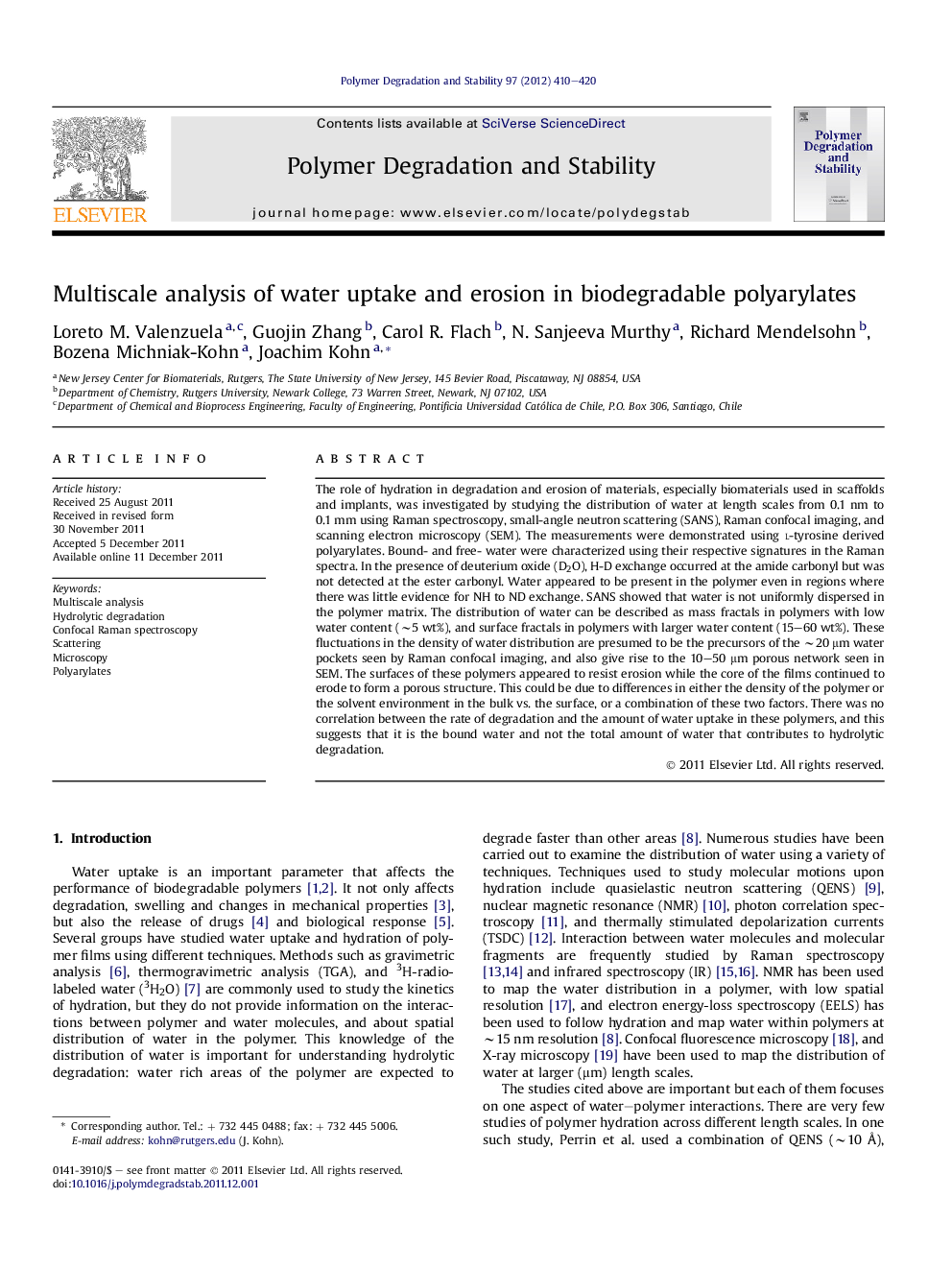| Article ID | Journal | Published Year | Pages | File Type |
|---|---|---|---|---|
| 5202999 | Polymer Degradation and Stability | 2012 | 11 Pages |
The role of hydration in degradation and erosion of materials, especially biomaterials used in scaffolds and implants, was investigated by studying the distribution of water at length scales from 0.1 nm to 0.1 mm using Raman spectroscopy, small-angle neutron scattering (SANS), Raman confocal imaging, and scanning electron microscopy (SEM). The measurements were demonstrated using l-tyrosine derived polyarylates. Bound- and free- water were characterized using their respective signatures in the Raman spectra. In the presence of deuterium oxide (D2O), H-D exchange occurred at the amide carbonyl but was not detected at the ester carbonyl. Water appeared to be present in the polymer even in regions where there was little evidence for NH to ND exchange. SANS showed that water is not uniformly dispersed in the polymer matrix. The distribution of water can be described as mass fractals in polymers with low water content (â¼5 wt%), and surface fractals in polymers with larger water content (15-60 wt%). These fluctuations in the density of water distribution are presumed to be the precursors of the â¼20 μm water pockets seen by Raman confocal imaging, and also give rise to the 10-50 μm porous network seen in SEM. The surfaces of these polymers appeared to resist erosion while the core of the films continued to erode to form a porous structure. This could be due to differences in either the density of the polymer or the solvent environment in the bulk vs. the surface, or a combination of these two factors. There was no correlation between the rate of degradation and the amount of water uptake in these polymers, and this suggests that it is the bound water and not the total amount of water that contributes to hydrolytic degradation.
